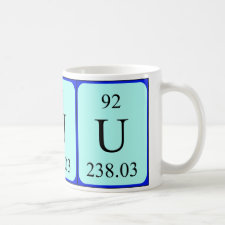
Authors: Dai YM, Zhou LM, Tang XH, Xi J, Ouyang JB, Liu ZR, Huang GL, Adesina AA
Article Title: Macroporous ion-imprinted chitosan foams for the selective biosorption of U(VI) from aqueous solution.
Publication date: 2020
Journal: International Journal of Biological Macromolecules
Volume: 164
Page numbers: 4155-4164.
DOI: 10.1016/j.ijbiomac.2020.08.238
Alternative URL: https://www.sciencedirect.com/science/article/pii/S0141813020343397
Abstract: The radiological toxicity of uranium in nuclear industrial wastewater poses a long-term threat to environment, thus the effective separation of radionuclide from wastewater is very important for environmental safety. Herein, the macroporous ion-imprinted chitosan foams (ICFs) were synthesized by the combination of the facile freezing-drying and ion-imprinting techniques. Compared with non-imprinted chitosan foam, the ICFs showed much higher adsorption capacities (qm = 248.9-253.6 mg/g) and better adsorption selectivity for U(VI) owing to their smart recognition of the target ions for matching the cavities formed during U(VI)-imprinting process. The adsorption kinetics could be fitted by pseudo-second-order model; whereas the adsorption isotherms could be described by Langmuir model, indicating chemisorption or complexation mechanism. The FT-IR and XPS analysis further confirms that the coordination between U(VI) and the active sites (amine and hydroxyl groups) is the main adsorption mechanism. The thermodynamic parameters suggest that the adsorption of U(VI) is endothermic and spontaneous. This work provides new insights for the design of novel macroporous biosorbents with both high adsorption capacity and excellent adsorption selectivity for U(VI) biosorption from wastewater
Template and target information: uranyl ion, U(VI)
Author keywords: Chitosan foams, Ion-imprinting, Uranium adsorption



Join the Society for Molecular Imprinting

New items RSS feed
Sign-up for e-mail updates:
Choose between receiving an occasional newsletter or more frequent e-mail alerts.
Click here to go to the sign-up page.
Is your name elemental or peptidic? Enter your name and find out by clicking either of the buttons below!
Other products you may like:
 MIPdatabase
MIPdatabase









